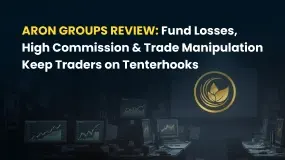简体中文
繁體中文
English
Pусский
日本語
ภาษาไทย
Tiếng Việt
Bahasa Indonesia
Español
हिन्दी
Filippiiniläinen
Français
Deutsch
Português
Türkçe
한국어
العربية
Benefits of Contracts for Differences
Abstract:Contracts for difference (CFDs) are financial derivative instruments that track many assets, including forex, equity shares, commodities, indices, and cryptocurrencies.

CFDs allow forex traders to take long or short exposure using leverage and settle the transaction with cash, rather than delivery of physical assets. These instruments differ from buying or selling the underlying asset because the contract holder doesnt need to post 100% of capital and does not own the asset. CFDs are not allowed in the United States.
The CFD trading stake only needs to cover the net change from the entry price to the exit price. Compare this to a forex broker who requires a higher percentage of capital in the account to buy or sell currency pairs. CFDs can be used to trade directionally, or you can buy one CFD and simultaneously sell another CFD, capturing the relative change in value in a ‘pairs trade’.
KEY POINTS
Contracts-for-difference are derivative instruments that track many assets.
CFDs provide leverage based on the buy and sell price, rather than the underlying assets.
CFDs support greater total exposure than forex cash markets.
EU rules limit the margin on forex CFDs to 30:1 on major pairs and 20:1 on minor pairs.
Limit CFD exposure on a single trade to a small percentage of total capital.
Do CFDs Provide Leverage?
The contract for difference has an embedded leverage feature that differs from broker to broker, and asset to asset. Leverage increases both trading profits and trading losses, allowing the market participant to take an exposure with borrowed capital. Current European Union regulations limit leverage on major currency pairs to 30: 1 and minor currency pairs to 20: 1. In addition, those rules provide negative balance protection so the trading account never goes below zero.
Forex contracts for difference are bought or sold in standard, mini, or micro ‘lots’, or unit sizes, that correspond with $100,000, $10,000, or $1,000 of the underlying forex pair, respectively. So, for example, a broker following EU rules will allow the trader to purchase three EUR/USD CFD mini lots ($30,000) while posting collateral (free account capital) of just $1,000.
It‘s important to understand how leverage will impact your trading returns, positively and negatively. For example, if you purchase $30,000 of EUR/USD using 30: 1 leverage in a $1,000 account, it will take just a 3.33% ($30,000 * .0333) move to either double your money or wipe out your capital. So, while leverage is an attractive tool, it’s also a double-edged sword.
To use leverage, the trader needs to open a ‘margin’ account as opposed to a ‘cash’ account. Each broker has different criteria for opening a margin account but most require a higher minimum stake than a cash account. In addition, the applicant may need to answer questions about trading experience and investment knowledge.
After opening a margin account, the trader needs to maintain a specific amount of capital. Each position requires the account holder to post a specific amount of funds from this capital pool, referred to as ‘initial margin’. This is the money needed to cover the loss if the trade doesnt work out as expected.
The broker will ensure the account holder has funds to cover potential losses or positions will be closed automatically to cover the deficit. As the market moves, the amount of margin needed to maintain the trade will change. If the value of the position decreases, the broker will take a ‘maintenance margin’ to cover losses in addition to the initial margin. If the value of the position increases, the initial margin will remain unchanged, but the maintenance margin will decline.
The margin calculation is in real-time, telling the broker the minimum amount of capital required for the account holder to maintain the trade. If the position moves against the trader and account capital isn‘t increased, the broker has the right to liquidate the position. It’s vital that new forex traders understand the written margin agreement and the brokers rights to liquidate positions before starting to trade CFDs.
Managing Your Risk
Trading CFDs can be risky, especially if you use leverage, so a written trading plan (trading rules) must be in place before entering a position (see ‘Psychology and Trading’). Limit the amount of individual trade exposure to a small percentage of the total account size, providing a measure of safety as your trading skills grow. Place stops on all trades, cut your losses and, if the market moves in your favor, adjust the stop and lock in some profits.
Summary
Contracts for difference (CFDs) are financial derivatives that allow market participants to trade the forex market without purchasing or selling currency pairs. CFD pricing tracks underlying assets and provides leverage to enhance returns. Trading CFDs requires opening a margin account at a CFD broker. Leverage can significantly enhance forex trading returns but will also generate damaging losses, especially when applied incorrectly. A well-constructed risk management plan is needed to trade CFDs for consistent profits.

Disclaimer:
The views in this article only represent the author's personal views, and do not constitute investment advice on this platform. This platform does not guarantee the accuracy, completeness and timeliness of the information in the article, and will not be liable for any loss caused by the use of or reliance on the information in the article.
Read more

Voices of the Golden Insight Award Jury | Nattachai Chalermwat, MH Markets
WikiFX Golden Insight Award uniting industry forces to build a safe and healthy forex ecosystem, driving industry innovation and sustainable development, launches a new feature series — “Voices of the Golden Insight Awards Jury.” Through in-depth conversations with distinguished judges, this series explores the evolving landscape of the forex industry and the shared mission to promote innovation, ethics, and sustainability.

Apex Markets Review: Traders Outraged Over Withdrawal Denials & Other Trading Issues
Struggling to access fund withdrawals from Apex Markets for months? Does the broker remain silent on fund withdrawal issues? Does the Saint Vincent and the Grenadines-based forex broker reject your winning trades? Have you failed to get a refund into the card used for deposits? Did the broker deduct from your trading account instead? Traders have been imposing these scam allegations while sharing the Apex Markets Review online. We read the reviews and shared some of them below. Take a look!

tastyfx Exposed: Fund Losses, Trade Manipulation & Account Related Hassles Hurt Traders
Are fund losses normal for you at tastyfx? Does the US-based forex broker constantly manipulate prices to hit your trading experience? Do you fail to receive a reply from the broker on your fund withdrawal requests? Do you constantly face trading account issues with tastyfx? It’s time to read the tastyfx review shared by traders online.

Aron Groups Review: Fund Losses, High Commission & Trade Manipulation Keep Traders on Tenterhooks
Have you lost your hard-earned capital while trading via Aron Groups Broker? Has the high commission charged by the broker substantially reduced your trading profits? Does the Marshall Islands-based forex broker constantly manipulate spreads to widen your capital losses? Have you been lured into trading courtesy of Aron Groups No Deposit Bonus, only to find that you had to deposit capital to get a bonus? All these and many more trading issues have become synonymous with the experience of Aron Groups’ traders. Consequently, many traders have shared negative Aron Groups reviews online. In this article, we have shared some of their reviews.
WikiFX Broker
Latest News
Angel one 2025 Review & Complaints
Latest FCA Daily Alerts and Consumer Warnings for 2025
Webull Widens Crypto Futures with Coinbase Derivatives
Is Nash Markets Regulated or Risk? Truth About Nash Markets’ License & Withdrawal Issues
CySEC Blocks Certification Access to Combat Advisor Impersonation
Exclusive Markets Under the Scanner: Traders Report High Swap Charges, Deposit Discrepancies & More
The United States Outgrows All Its Major Peers
PINAKINE Broker India Review 2025: A Complete Guide to Safety and Services
Pinched By Penny Shortage, US Retailers Beg Congress To Step In
PINAKINE Broker Review: A Complete Look at Its Services and Risks
Currency Calculator



